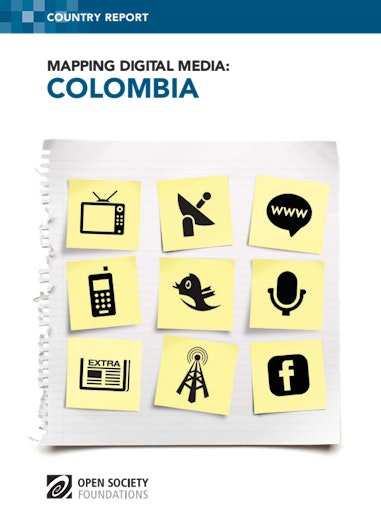The Mapping Digital Media project examines the global opportunities and risks created by the transition from traditional to digital media. Covering 60 countries, the project examines how these changes affect the core democratic service that any media system should provide: news about political, economic, and social affairs.
In Colombia, analog free-to-air television is still by far the most influential source of news. Digitization seems to be increasing both the quantity and range of news and the total public consumption of media as many traditional outlets now have online versions, while some new online only outlets have been born in recent years and gained recognition as news providers. Internet use is increasing very fast in urban areas and higher socioeconomic groups.
Public media have been strengthened in recent years and public service provision is considered an important issue in Colombia. The transition to digital terrestrial television (DTT) is seen as both a challenge and an opportunity to public media. Digital activism too has grown in Colombia, and active internet users have proved the power of social networking, which has become very popular. Political debates and hostage rescue operations have, among others, triggered big digital mobilizations, especially on Facebook and Twitter.
The policy and regulatory framework for digital media is still being defined as the media regulatory framework itself is functional, but there are several procedural flaws in the implementation.
Download
-
Mapping Digital Media: Colombia (471.6 Kb pdf file)
Download the complete 99-page report.
-
Los medios digitales: Colombia (471.14 Kb pdf file)
Download the complete 102-page report in Spanish.
Read more
Voices
What Does Independent Journalism Look Like in the Digital Age?

Journalists and media organizations can find themselves repressed because of inadequate or deliberately repressive policy. Mapping Digital Media examines the situation in 56 countries.
Voices
Does Digital Media Mean Better Media?
From Montenegro to Nicaragua to China to Egypt, has digital media improved access to good-quality journalism?
Voices
Early Days for Digital Media in Morocco
Digital media in Morocco continues to advance. With 105 percent mobile phone penetration in the country and a growing appetite for online news more change is on the way.
